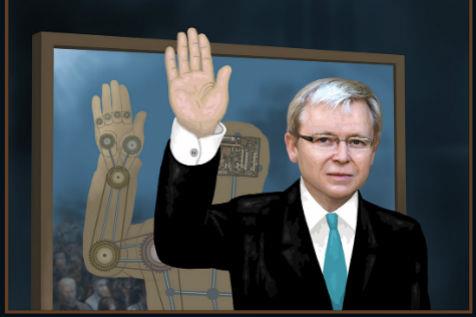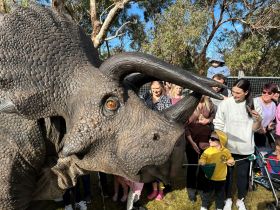In all the chatter about new arts policy and funding, the visual arts and literature are feeling ignored.
Over the past couple of years, bit by bit the performing arts is even further consolidating its dominance at both national and state/territory level. We should not diminish the excellent value delivered by the major performing arts sector to the community but the question of equity in representation and support does need to be raised. It is revealing when you piece the bits together.
Starting with the national cultural policy and the change to the Australia Council legislation, structure and funding you begin to see a pattern emerging. The rationale for changing the Australia Council Act was to allow a more flexible internal structure and a ‘skills based’ board (i.e. more like that for a corporation).
With the demise of the specific artform boards goes their voice on the governing board of the Australia Council. While the performing arts had the majority of voices in the previous structure with three performing arts representatives compared with one each for literature and visual arts, craft and design, what is making visual arts and literature anxious is the complexion of the restructured governing board. Of the 12 newly appointed board members, the balance has changed even more radically with 10 of the 12 having an association with the performing arts and festivals, only one who has a strong connection with the visual arts and no-one from literature (unless you count the script writing aspect of the film-making career of one other representative).
Why is this important when the argument is that the responsibility of this group is not to make specific funding decisions but to concentrate on governance and strategic planning? Because previously, though the major performing arts sector commanded the majority of the Council’s budget[1] at least the other artform boards had a known funding allocation. With a board so dominated by people whose understanding and experience comes from their performing arts affiliations, it is understandable that there is arts industry concern at what could happen. The new advisory panels (which replace the boards) have only the power to make recommendations rather than decisions, so the imbalance may worsen because the governing board will decide on the overall division of the funding pie.
While the allocation to the Australia Council in the 2013 federal budget, of an extra $60 million over four years for ‘unfunded excellence’ was celebrated as a real win at a time of fiscal austerity, before the new advisory panels had the opportunity to make any decisions, Tony Grybowski, the Councill’s new CEO had already told the media that the unfunded excellence money would not be spread equally between art forms, and music and literature would be the primary beneficiaries.
In addition, the major performing arts sector has scored high in four other areas getting a new $36.25 million over 4 years which includes:
– $20.8 million for 6 elite performing arts training institutions
– $9.3 million worth of new funding for 6 major performing arts companies (theatre, dance and circus) to ensure they continue to tell uniquely Australian stories
– $5 million going to the ‘Major Performing Arts Excellence Pool’, (on the proviso the funding is matched by the States and Territories)
– $3 million to boost contemporary music industry innovation and exports including the appointment of Australia’s first National Live Music Coordinator.
Compared with what has been allocated in new funding for the performing arts, it is very hard to understand why the visual arts sector’s modest request of $3 million annually for fair payment for artists has been ignored. The National Association for the Visual Arts (NAVA) has made the case that both these fees and core operational funding for artist run initiatives currently lie outside the Australia Council’s guidelines and may not have been included in estimates of unfunded excellence.
Last week the Literature and Visual Arts Peer Assessment Panels met and allocated less than 3% of the total of $15 million unfunded excellence budget. We should watch where the other 97% goes this year.
Worryingly, at state and territory level we are seeing negative impact from progressive funding cuts, though it is difficult to disaggregate the figures for each artform area. For the visual arts and craft sector, the VACS funding is reputedly protected from the cuts, but not so the base funding for small to medium visual arts organisations and artists. Having struggled so hard to secure a funding increase from 2002, it is depressing to see a slide backwards rather than an embrace by state/territory governments of the real value the arts provides for the whole community, both socially and economically.
Take Queensland for example. The major performing arts organisations have been shielded from arts grant cut of $12.4 million, leaving the other sectors, including the visual arts, proportionally more heavily impacted. Special projects funding has been withdrawn from the state gallery ($2.2 million) and gone is the specified funding for Artist Run Initiatives making it a challenge to keep artists from fleeing interstate. Meanwhile a new $3 million is being invested in the ‘Super Star Fund’ that promotes major local productions featuring celebrity performers, and the performing arts touring fund has also had a funding boost. There are arts funding cuts in other states too, especially Victoria, NSW and SA.
We were hoping for the heating up of arts support across the board in Australia. Sadly for the visual arts, things are looking pretty tepid. Sigh!
[1] In 2011-12 of the Australia Council $179m, the performing arts was allocated 75% of the budget while visual arts got 10% and literature about 3% http://creativeaustralia.arts.gov.au/full-policy/#m-217





